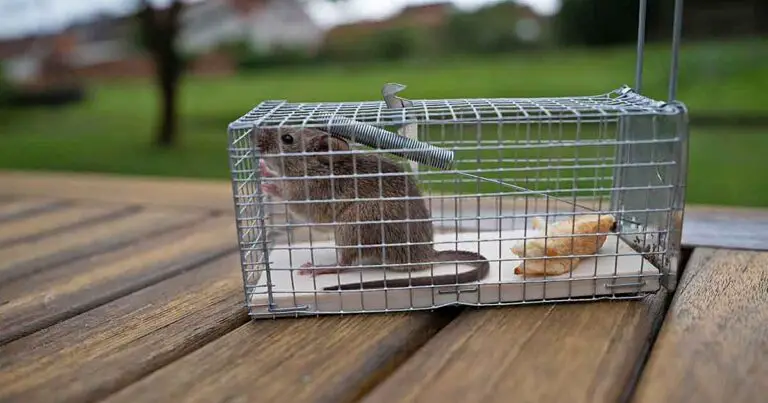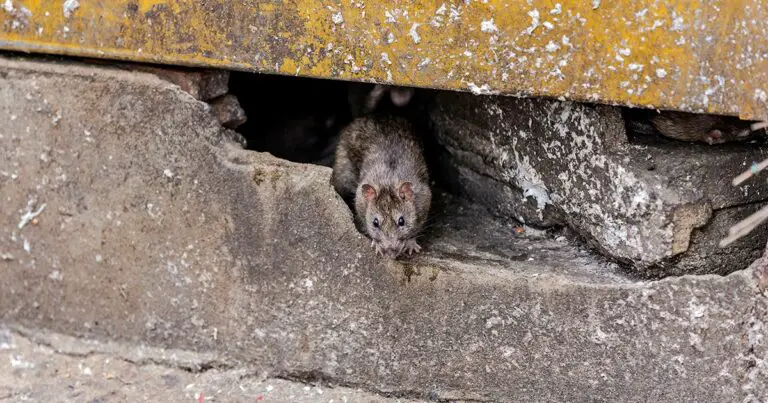Can Rats Swim? (Sewer and Drain Rats)
Can rats swim? Surprisingly, some rats can swim for up to 60 hours at a time. And if you’re not already impressed by that feat, rats can even hold their breath underwater for up to 3 minutes!
Not all species of rat are great swimmers though. Most domestic rats do not possess many of the adaptations mentioned above, which limits their ability to stay afloat or swim for long distances. Additionally, wild and feral rats living near bodies of water may become better swimmers through adaptation and natural selection.
Can Rats Swim?
In the 1950s, Dr. Curt Richter, a Harvard Graduate and scientist from John Hopkins University, performed an insightful yet cruel experiment on rats. He placed the rats into buckets of water and timed their swimming ability. The average rat lasted for about 15 minutes in water before it began to drown.
Dr. Richter then rescued the rats when he saw them struggling to survive. He dried them off, gave them a short rest period, and then put them back in the water again. However, this time Dr. Richter identified substantial changes in their behavior.
The rescued rats were able to swim for up to 60 hours, instead of the previously observed 15 minutes. Psychologists often cite this experiment as evidence of the power of hope.
How Long Can Rats Hold Their Breath?
Rats can hold their breath underwater for up to three minutes. Possessing strong swimming abilities and survival instincts allows rats to swim in sewers, travel through drain pipes, and come out of the toilet.
Although rats can’t breathe underwater, they come up for air when they need to. Surprisingly, during the COVID 19 pandemic, the population of rats in the United Kingdom skyrocketed to approximately 150 million. And extremely motivated rats were breaking into homes through their toilets.
Can Rats Swim Up Toilets?
As stated above, rats can swim up toilets if they’re courageous enough. And it’s actually pretty easy for them to do so.
Generally overlooked, rats are incredibly strong swimmers. They can even remain submerged underwater for up to three minutes at a time. In mere minutes, these critters have all it takes to travel up through your toilet from the sewer line.
What’s more, they have no trouble squeezing through tight spaces. Astonishingly, some small rodents are capable of squeezing through openings no larger than a quarter! Luckily, it is not all that common that rats will swim up and out of your toilet.
How Often Do Rats Come Up Toilets?

Animal control experts report that only one out of every thousand calls for rodents entering homes involve rats coming up through toilets. Although it can happen, the chances are slim that a rat will make its way into your home by swimming up a toilet. So, you can relax and look before you sit, but don’t worry too much about this scary scenario!
How to Prevent Rats in the Toilet
- Do not dispose of any food or attractants down toilets or drains
- Safeguard all points of entry to drains and consider installing drain valves
- Install sewer pipes made of PVC or clay that are at least 24″ (60 cm) wide
- Install a one-way rat baffle in the sewer line (this protects your sewer line and keeps rats out)
- Ensure that all garbage bins in the vicinity of drain openings are sealed tightly
What Should You Do if There’s a Rat in Your Toilet?
If there is currently a rat in your toilet just take a minute to stop and breathe. You have options. The best option is to keep the toilet lid closed and contact a pest control removal company or a plumber.
You can also take matters into your own hands and kill the rat yourself. However, it isn’t for light hearts or weak stomachs.
If you do plan on removing the rat from your toilet yourself, pour bleach into the toilet bowl, close the toilet lid and put a weight on it just to be safe. Within just fifteen minutes, the rat will die from asphyxiation.
Can Rats Come Up Through Shower Drains?
Unfortunately, rats can get into your home even through the drain pipes. The sewer system is an ideal habitat for rats since they have access to a never-ending supply of food and water from our waste.
Faulty drains and pipes are often the root cause of rat infestations. All it takes is a tiny crack or opening for rats to gain access and make a nest in your plumbing system.
Signs of a Rat Stuck in the Drain
- Blocked or backed-up pipes
- Creaking noises come from the drain
- The flow of water is slow
- Pipes are bent or cracked
How Do I Stop Rats Climbing Up Drain Pipes?
The good news is that there are plenty of preventative measures you can take to help protect your drains from rat entry. Valves, barriers and traps are all effective methods for preventing rats from entering through the drain pipes.
- Seal the drains
- Place plastic covers or metal gratings inside the pipes
- Place metal cages in the ventilation pipes
- Use rodent barriers such as downward-facing fins in the discharge stack and one-way valves in the underground drainage
How to Get Rid of Rats in Sewer Pipes
Once you have identified that the rats in your home are coming from the sewer pipes, there are a few ways to get rid of them.
- Repair cracks in pipes
- Remove rat attractants
- Catch rats in sewer pipes
Repair Cracks in the Pipes
Check for any cracks or damage in the pipes. Any tiny opening is enough to let rats enter your home. If there are any cracks, use silicone or cement to seal them and stop the pests from getting inside your plumbing system. You can also use caulking and steel wool, putty, or patches to repair the cracks.
Remove Rat Attractants
Another effective measure to get rid of rats is to eliminate any attractants from your sewer system. Rat attractants include anything that may lure the rodents, such as food debris, nesting materials, plants, and vegetation. You can also keep the area clean and free of clutter to make it as unattractive as possible for rats to live in.
Catch Rats in Sewer Pipes
Once you have made sure there are no cracks and have removed all rat attractants, you can use traps or baits to catch the rats living in your sewer pipes. Use a non-toxic bait or poison and place them carefully around sewers, manholes and other areas—follow safety instructions when using these products.
Are Sewer Rats Dangerous?
Like all wild rats, rats that come up from your drain are dangerous. The Centers for Disease Control and Prevention (CDC) have warned that rats can transmit life-threatening diseases to humans, such as leptospirosis, rat-bite fever and salmonellosis. They also carry parasites like fleas, ticks, and mites which can spread other diseases.
If you have a rat infestation in your home or business premises it’s best to call a professional pest control service right away.
Conclusion
Rats can swim and they are often found in sewers, manholes and other areas near water. They pose a serious health risk to humans since they carry diseases like leptospirosis, rat-bite fever and salmonellosis.
To prevent rats from entering your home or business premises it is important to seal any cracks or openings in pipes as well as remove attractants such as food debris and nesting materials.
If you suspect that there may be rats living in the sewer system of your property, contact a professional pest control service right away for assistance with removing them safely from your environment.









One Comment